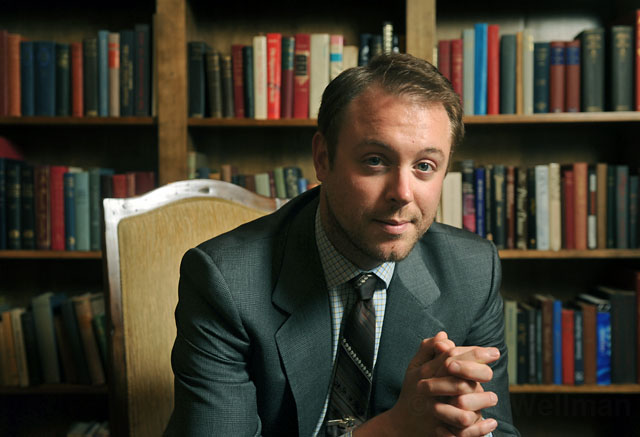The Music Academy’s New Programming VP, Patrick Posey
Saxophone Player Brings Juilliard Experience to Miraflores

The saxophone may not be the first instrument that comes to mind when someone mentions the Music Academy of the West, but as of this season, a sax player named Patrick Posey is making many of the biggest decisions about what kind of music will be played. Posey has been the academy’s vice president of artistic planning and educational programs since September 2012, and even though he has become familiar to the faculty and staff, the community’s first chance to feel the impact of his work comes this week, as the music fellows begin to practice and perform some of the many compositions he has chosen and scheduled for them. The task of programming a Music Academy season is dauntingly complex. Hundreds of individual concerts take place there over the course of the summer, each requiring a specific set of compositions and a measurable educational goal. Add to that the necessity of making it all work within a matrix of constantly shifting ensembles, venues, and formats, and such an undertaking may look all but impossible.
What kind of experience could possibly prepare anyone, never mind a young sax player, to put this vast puzzle together? In this case, the short answer would be five years at the Juilliard School, where Posey rose to become director of orchestral planning, a position that required him to handle the logistics of five orchestras simultaneously. In addition, in 2011, while still at the peak of his responsibilities at Juilliard, Posey managed to find time to coordinate the YouTube Symphony Orchestra Project, a collaboration that involved YouTube, the London Symphony Orchestra, and partners around the world, and that culminated in concerts in Sydney and in New York that were conducted by Michael Tilson Thomas.
Since last September, Posey has traveled back and forth between Santa Barbara and New York City, where he still maintains a residence and performs regularly on the sax, both as part of the new music ensemble Le Train Bleu and with collaborators as wide-ranging as oud player Rahim AlHaj and sitarist Shujaat Husain Khan. Speaking with Posey last week in his office at the Music Academy’s Miraflores, I was impressed by his calm demeanor in the face of the upcoming season, and by his youthful open-mindedness about all things musical. Looking through the exciting season program, it’s easy to notice where Posey’s involvement in the active New York new music scene has had an impact — the Brooklyn-based string quartet Brooklyn Rider is coming, and so is pianist and blogger Jeremy Denk, who has been named artistic director for the 2014 Ojai Music Festival. But when asked about his work, Posey tends to stress the bigger picture rather than the status value of any of its individual parts. “The Mosher guest artist program is what allows us to do all this,” he explained, “and it’s just a great way for us to open up the educational experience to our audience, because each of these guests will be seen in both a recital and a master-class context.” In nearly every instance, Posey expresses his rationale for programming a certain piece or scheduling a certain performer in terms of both its educational benefit and its value to the festival. Part of the reason that Brooklyn Rider will be appearing, for example, is that the academy has augmented its chamber-music education program with a new string-quartet component.
When asked about the biggest challenges of his job, Posey said, “We must remember that we’re a festival, and understand how we differ from a conservatory. If we get it right, then the fellows will have an experience here that they will remember for the rest of their lives.”
With the energy, skill, and imagination on display in what Patrick Posey has already created this year, that goal looks very likely to be reached. For a full schedule of the Music Academy’s summer programming, visit musicacademy.org.



